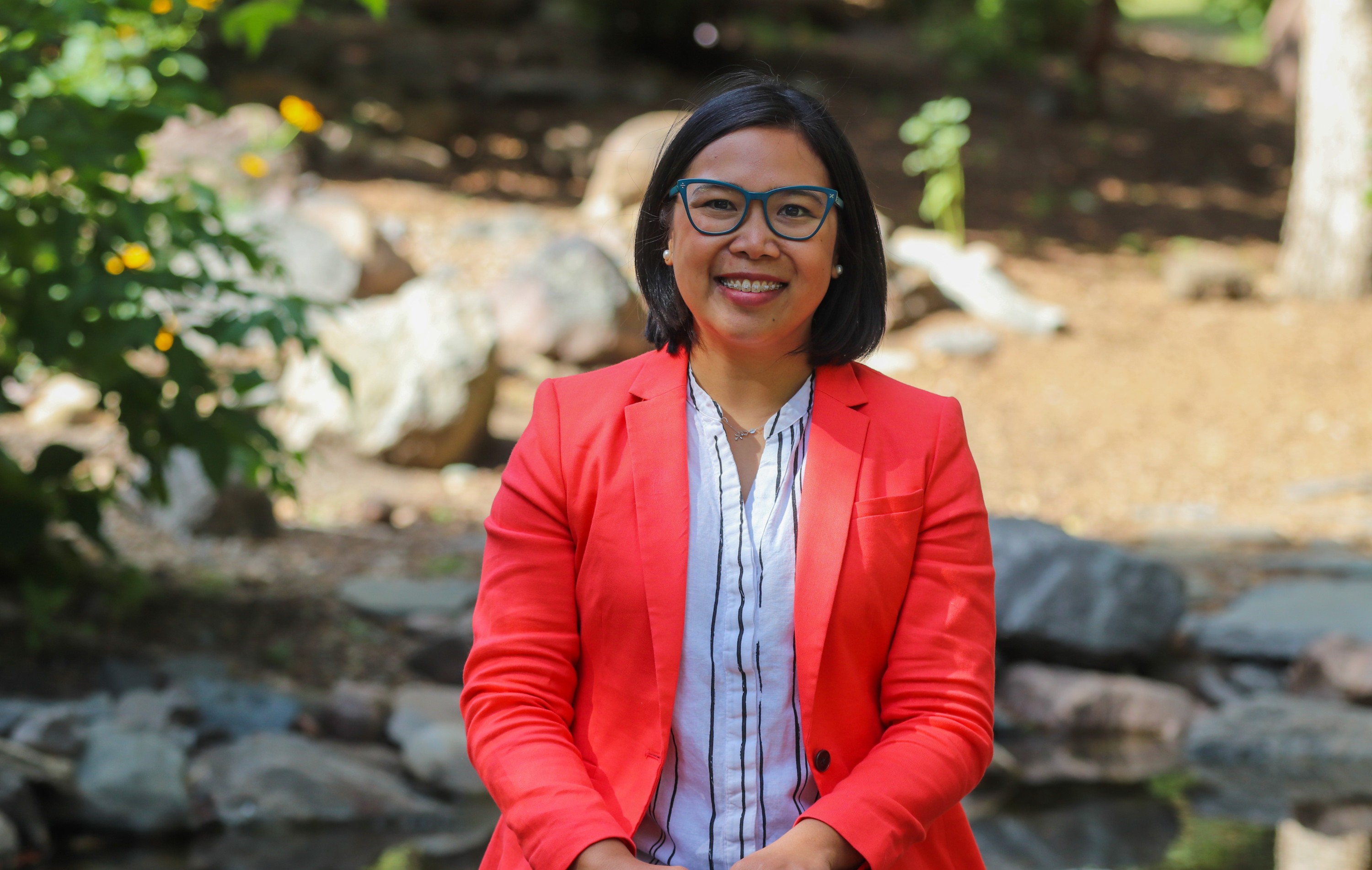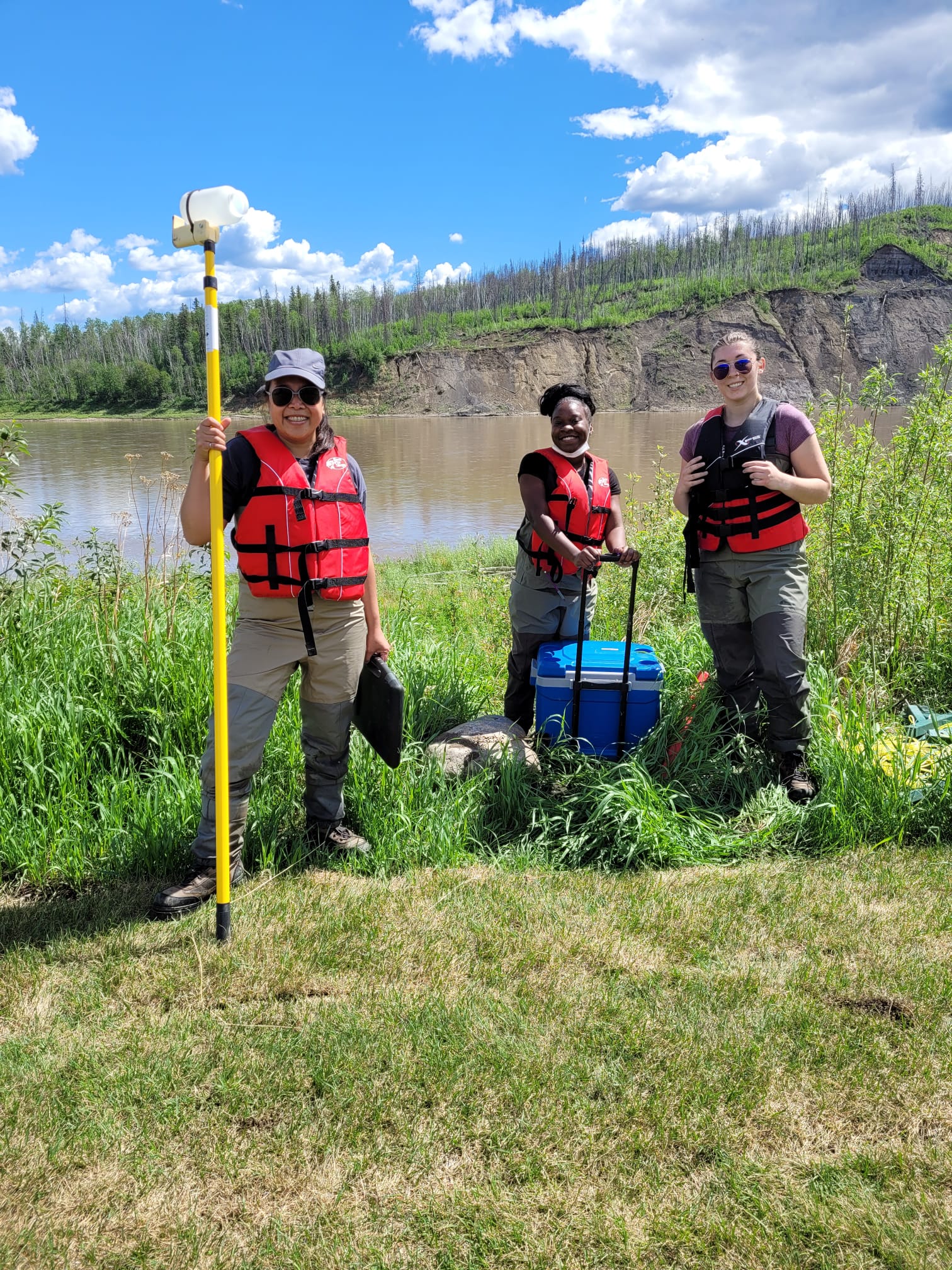Growing up in the Philippines, a country in the western Pacific Ocean made up of 7,107 islands, Maricor Arlos didn’t think much about the water that surrounded her. With no central sewage system, many households have septic tanks or other forms of decentralized waste collection that would be cleared out periodically, without much notice or interest. It wasn’t until she came to Canada to study environmental engineering that Arlos began to think about her relationship to water.
At a watershed innovation workshop in Kananaskis in 2013, Arlos, who had just submitted her master’s thesis from the University of Waterloo and was contemplating her next career move, was caught off guard when an Indigenous elder asked her why she was there. Her parents were agricultural scientists and her sister was an engineer, and there had been no question that she would follow a similar path.
“I had never reflected on what I wanted to do, or what my values were,” says Arlos. “I thought, I actually don’t know why I’m here.”
Thinking generations ahead
The learning circle included people from industry and government, but what impressed her most was how Indigenous participants talked about sustainability.
“They think seven generations ahead of time,” she says. “I never thought about that when I was in the Philippines, or even when I was doing my undergrad education. It’s a beautiful thing for someone who is working in that area to think about: how do we take care of our water resources not just for now, but for future generations?”
It was this life-changing experience that led Arlos to focus her research on waste water impacts — specifically emerging issues and potential remediation approaches associated with municipal wastewater-derived micropollutants in Canada. The micropollutants of concern, including pharmaceuticals, hormones, antidepressants and other non-industrial use chemicals, are not fully removed at wastewater treatment facilities. They occur in very low concentrations, but they still have the potential to affect fish and other aquatic and invertebrate life.
“We have really good wastewater treatment systems here in Canada, but we haven’t designed our treatment plants for specific removal of pharmaceuticals and personal care products,” notes Arlos. “With the advancements in technology, you can find them in parts per trillion — a ‘drop in the lake’ concentration — but if you have different concentrations of a certain chemical in a river over time, what does that mean for the organisms in the river?”
Now an assistant professor in the Department of Civil and Environmental Engineering at the University of Alberta, Arlos works mainly with the Advancing Canadian Wastewater Assets facility in Calgary, using a series of artificial streams for simulation testing of micropollutants in wastewater.
The facility, she says, is a “nice little playground” where she collaborates with University of Calgary biologists on research related to environmental risk assessment and micropollutant monitoring data.
A watershed is more than the flow of water
A watershed, Arlos explains, is a land area that channels a web of melt or rain water, streams and rivers to a single larger body of water. Alberta is unique in that it encompasses a lot of glacier-fed watersheds, but as she notes, a watershed is more than the flow of water.
“People are connected to the movement of water,” says Arlos. “There are cities and agricultural areas that have connections to water that may be good, or bad. It may be beneficial for the environment. It may be spiritual. There's hydrology or water balance, which is how I was trained, where you start at the top and go all the way to the bottom, but one thing I was not trained for is the connections with people and animals within a watershed.”
Outside urban centres, she says, wastewater management is an issue, particularly when it comes to clean drinking water in Indigenous communities. Arlos describes herself as someone who likes to connect the dots, and one of her proposals is a mobile trailer that provides both analytical chemistry services and wastewater treatment on a smaller scale for these underserved communities.
“There is a disconnect between an engineering education and social responsibility,” says Arlos. “I want to co-create solutions and make water research equitable and available in the communities here, and also in my home country.”
Arlos takes her responsibilities as a water mentor seriously — in her role as an educator but especially as a woman and a person of colour. She has served as a mentor with I-STEAM Pathways, a U of A program that enables First Nations, Métis and Inuit undergraduate students to gain research experience in environmental fields, and she is intentional about recruiting a diverse group of undergrad and graduate students to her classrooms and research initiatives.
“Most of my students are members of underrepresented groups who bring in their own ‘watermarks’, further propelling innovation driven by dedication and purpose,” says Arlos. “I truly want my team to produce work that not only puts knowledge into practice, but also fits their own aspirations when implementing and generating ideas.”

